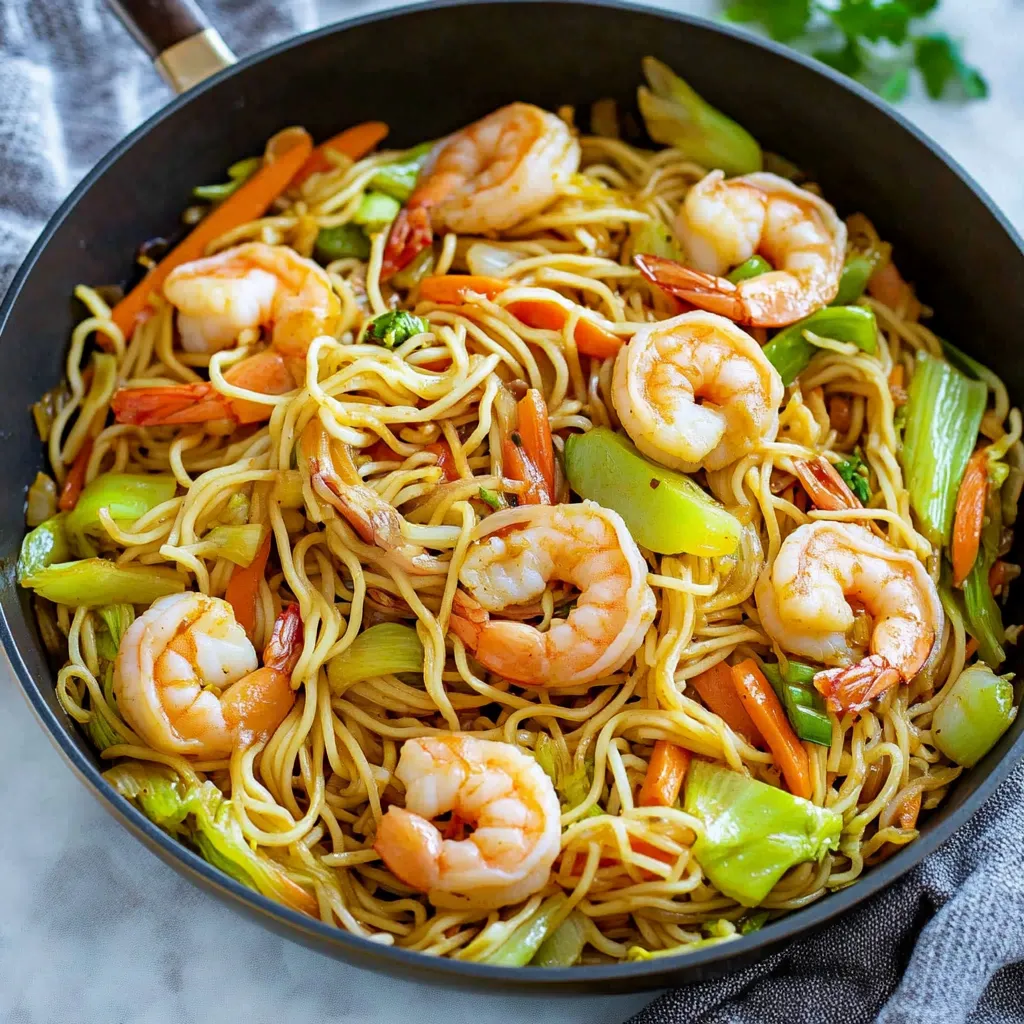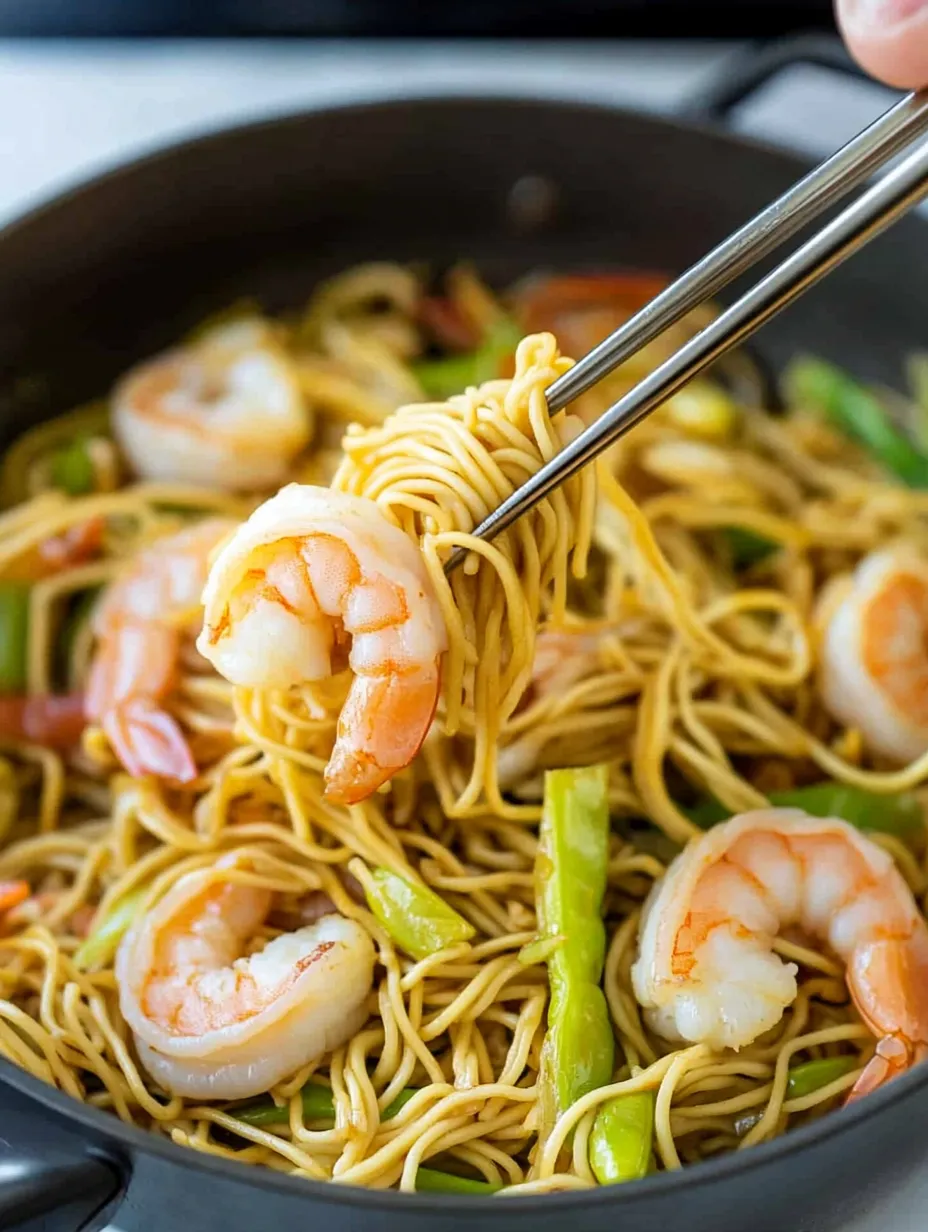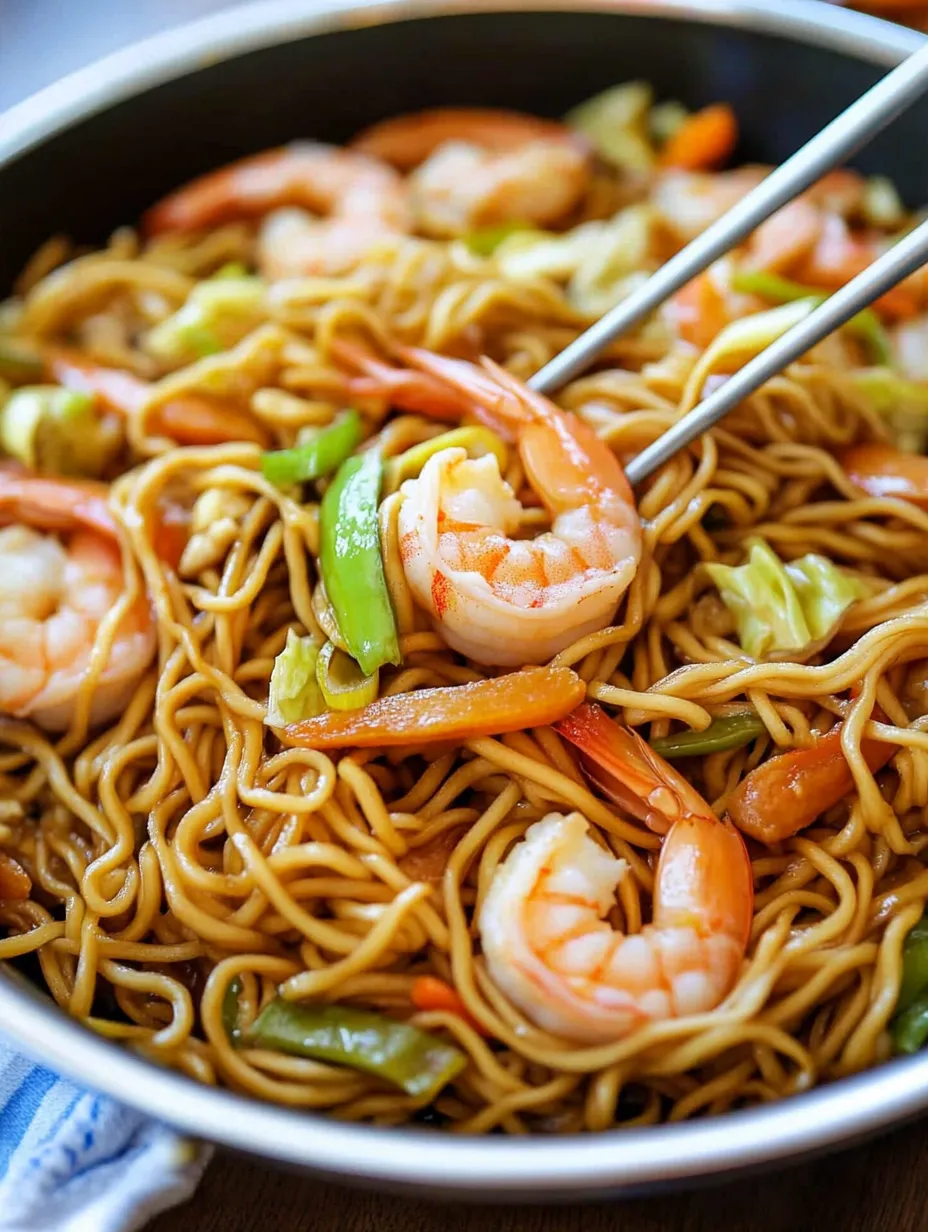 Highlight
Highlight
This shrimp chow mein transforms ordinary yakisoba noodles into a restaurant-quality dish with succulent shrimp and crisp vegetables. After years of ordering takeout, I discovered this homemade version delivers all the authentic flavors without the waiting or extra cost.
I first created this recipe when my family was craving Chinese food during a snowstorm. The combination of textures and flavors was so satisfying that it's now in our regular dinner rotation, requested almost weekly by my teenagers.
Ingredients
- Refrigerated yakisoba noodles the time-saving secret that eliminates boiling pasta
- Shrimp provides lean protein and cooks incredibly quickly
- Cabbage carrots celery and onions add crunch and nutrition
- Fresh ginger and garlic essential for authentic Asian flavor
- Soy sauce and honey create the perfect sweet-savory balance
- Toasted sesame oil adds that distinctive nutty finish that makes restaurant dishes special
Step-by-Step Instructions
- Sauté the Aromatics
- Cook the sliced white onion in hot oil for a full 3 minutes until it begins to caramelize around the edges. This initial browning creates a foundation of flavor for the entire dish.
- Add the Hardy Vegetables
- Introduce carrots and celery to the hot pan, allowing them to soften slightly while maintaining some crispness. The vegetables should still have good texture after 3-4 minutes, becoming tender-crisp rather than mushy.
- Wilt the Cabbage
- Add shredded cabbage with a splash of water, stirring constantly. The water creates steam that helps the cabbage wilt quickly while preserving its slight crunch. This step should take only 2-3 minutes until the cabbage becomes translucent but still has texture.
- Cook the Shrimp
- After removing vegetables, cook shrimp in fresh oil until they curl and turn completely pink with no gray spots remaining. This typically takes 2-3 minutes per side, depending on shrimp size. Properly cooked shrimp should be opaque throughout but still tender.
- Prepare the Noodles
- Run packaged yakisoba under hot water to loosen them, using your fingers to gently separate the strands. This step is crucial for ensuring the noodles don't clump together in the final dish.
- Bring Everything Together
- Combine the vegetables, shrimp, and loosened noodles in the pan before adding the sauce mixture. Toss continuously for 1-2 minutes to ensure every noodle is evenly coated and the flavors have melded.

My family's favorite part of this dish is always the shrimp. I've found that splurging on wild-caught shrimp makes a noticeable difference in flavor and texture. One memorable Sunday dinner, my mother-in-law who usually politely picks at new dishes actually asked for seconds and the recipe!
Vegetable Options
The beauty of chow mein lies in its flexibility. While this recipe specifies cabbage, carrots, celery, and onions, you can easily swap in whatever vegetables need using up in your refrigerator. Snow peas, bell peppers, mushrooms, and bean sprouts all work beautifully. The key is to add firmer vegetables first, then gradually incorporate quicker-cooking ones to ensure everything finishes at the perfect texture.
Protein Variations
Not a fan of shrimp? This versatile recipe works wonderfully with other proteins. Substitute thinly sliced chicken breast, sliced beef, or tofu for the shrimp. When using chicken or beef, slice it against the grain into thin strips and cook it slightly longer than you would shrimp. For a vegetarian version, use extra-firm tofu pressed to remove excess water and cut into cubes before pan-frying until golden.
Noodle Know-How
Refrigerated yakisoba noodles are the convenience secret in this recipe, but if you cannot find them, several alternatives work. Dried chow mein noodles, thin spaghetti, or even ramen noodles (discard the seasoning packet) can substitute nicely. Just cook according to package directions until al dente, drain well, and then add to your stir-fry. The texture will vary slightly, but the dish will still be delicious.
Make Ahead Tips
This dish comes together quickly, but you can prep ahead to make cooking even faster. Chop all vegetables up to two days in advance and store in airtight containers in the refrigerator. The sauce ingredients can be combined and refrigerated for up to a week. When ready to cook, simply bring prepped ingredients to room temperature and proceed with the recipe for a lightning-fast meal.

Common Questions About the Recipe
- → Can I substitute the shrimp with another protein?
Absolutely! This chow mein works wonderfully with chicken, beef, pork, or tofu as alternatives. For chicken or beef, slice thinly and stir-fry for 3-4 minutes until cooked through. For tofu, press firm tofu to remove excess moisture, cube it, and stir-fry until golden brown before proceeding with the recipe.
- → What can I use if I can't find yakisoba noodles?
If yakisoba noodles aren't available, good substitutes include lo mein noodles, thin spaghetti, or even ramen noodles (discard the seasoning packet). Cook according to package directions until al dente, then add to the stir-fry. Egg noodles or rice noodles can also work but may change the texture slightly.
- → Can I make this dish ahead of time?
While best enjoyed fresh, you can prepare components ahead of time. Clean and cut all vegetables and store refrigerated for up to 2 days. Mix the sauce and store separately. When ready to cook, stir-fry everything according to instructions. Fully cooked chow mein can be refrigerated for 2-3 days, though the noodles may absorb moisture and soften.
- → How can I make this spicy?
To add heat, incorporate 1-2 teaspoons of sriracha, sambal oelek, or red pepper flakes to the sauce mixture. Alternatively, add a thinly sliced fresh chili or diced jalapeño during the vegetable stir-fry phase. For tableside customization, serve with chili oil or hot sauce on the side so everyone can adjust to their preference.
- → Can I add more vegetables to this chow mein?
This dish is very flexible when it comes to adding vegetables. Great additions include snow peas, bell peppers, broccoli florets, bean sprouts, water chestnuts, or baby corn. Just be mindful of cooking times - add harder vegetables earlier and quick-cooking ones later. Keep the total volume reasonable to maintain the proper noodle-to-vegetable ratio.
- → Is this dish gluten-free?
Standard chow mein is not gluten-free due to the wheat-based noodles and soy sauce. To make it gluten-free, substitute the yakisoba noodles with rice noodles or gluten-free pasta, and use tamari or coconut aminos instead of regular soy sauce. Always check labels on all ingredients to ensure they're certified gluten-free.
